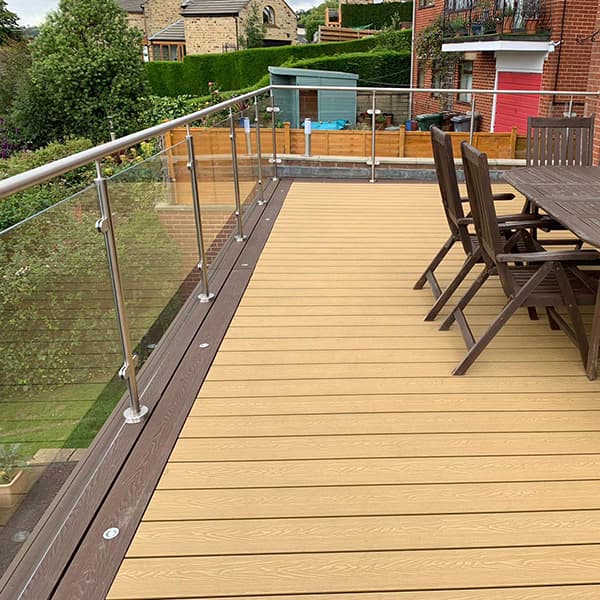
The combination of wood and plastic results in an exceptionally robust and dimensionally stable material.
Color stabilizers ensure high color stability in the through-colored decking boards. However, due to the high proportion of natural materials, slight color variations may occur. After exposure to the weather for a few months, the boards will reach their final color, which will then remain unchanged.
WPC is a moisture-resistant composite material. It can withstand significant temperature fluctuations, making it ideal for outdoor use.
Since the wood used in WPC comes from wood industry by-products, WPC is environmentally friendly. Only common plastics are used in its production. Therefore, WPC boards are recyclable.
WPC is a homogeneous and dense material. When fungicides are added to it, it becomes resistant to insect and fungal infestation.
If WPC boards are exposed to direct sunlight, they heat up faster than wooden boards. Light-colored boards heat up less than dark-colored ones.
The surface of WPC boards is splinter-free and therefore very barefoot-friendly. These boards are also more slip-resistant than wooden boards when wet.
Scratches and stains do not penetrate the homogeneous material of WPC as easily as they do in the case of wooden boards. You can remove stains more easily.
WPC boards are easy to maintain and require no special care.
The expansion of WPC boards is influenced by temperature and humidity. The plastic in the material mix responds to temperature differences, while the wood reacts to changes in humidity. This results in expansion and contraction behavior.